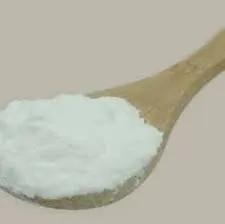Introduction to Polyacrylamide Gel Electrophoresis
Polyacrylamide gel electrophoresis (PAGE) is a widely used technique in biochemistry and molecular biology for the separation of proteins and nucleic acids based on their size and charge. This method has become essential for analyzing the molecular weight and purity of various biomolecules, facilitating numerous applications in research and diagnostics.
The Principle of PAGE
PAGE employs a gel matrix composed of polyacrylamide, a polymer formed from acrylamide and a cross-linking agent. The concentration of acrylamide in the gel affects the pore size; higher concentrations create smaller pores, which are suitable for separating smaller molecules, while lower concentrations allow larger molecules to pass through more easily. When a sample is introduced into the gel, an electric current is applied, causing charged biomolecules to migrate through the gel matrix.
Negatively charged molecules, such as proteins with a net negative charge, move toward the anode (positive electrode), and positively charged molecules move toward the cathode (negative electrode). The rate of migration is inversely proportional to the size of the molecule; smaller molecules travel faster and farther than larger molecules. This size-based separation enables researchers to distinguish between different biomolecules within a complex mixture.
Types of PAGE
There are two primary types of PAGE denaturing and native electrophoresis. Denaturing PAGE involves the use of agents like sodium dodecyl sulfate (SDS) that disrupt the secondary and tertiary structures of proteins, ensuring that separation is based solely on molecular weight. This technique is particularly useful for analyzing purified proteins and determining their molecular weight by comparing the migration distance to known protein standards.
polyacrylamide gel electrophoresis pdf

Native PAGE, on the other hand, maintains the proteins' native conformation and charge, allowing researchers to study the functional and interactive properties of proteins. This method is particularly valuable in evaluating enzyme activity, protein-protein interactions, and multimeric protein structures. However, it can be less effective for resolving proteins with similar sizes or charges.
Applications of PAGE
PAGE has numerous applications in biological research. It is commonly used for the analysis of protein expression levels, purity assessments, and determination of protein subunit composition. Additionally, PAGE is instrumental in studying post-translational modifications and protein folding.
In genetics, acrylamide gel electrophoresis is effective for separating nucleic acids, including DNA and RNA. Techniques such as DNA fragment analysis, sequencing, and genotyping rely heavily on PAGE for the precise separation of nucleic acid fragments based on size. Moreover, PAGE can aid in the detection of mutations or polymorphisms within genetic sequences.
Conclusion
Polyacrylamide gel electrophoresis remains a fundamental technique in molecular biology and biochemistry, embraced for its versatility, effectiveness, and relatively simple execution. The ability to separate proteins and nucleic acids with high resolution allows researchers to gain critical insights into the biological functions of these molecules. As advances in gel formulations, electrophoresis systems, and detection methods continue to evolve, PAGE will undoubtedly remain a cornerstone in the toolkit of scientists working in fields ranging from proteomics to genomics. This technique not only enhances our understanding of fundamental biological processes but also paves the way for novel therapeutic developments and diagnostics in medicine.

